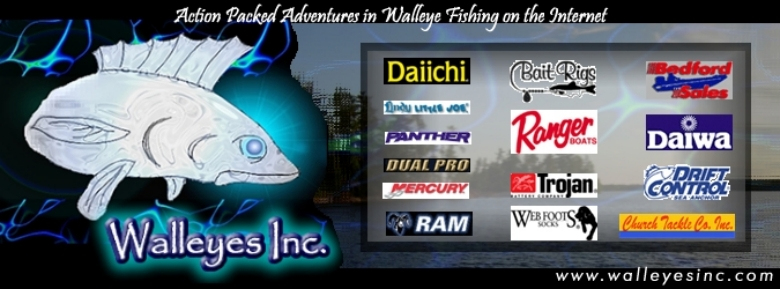| Kids ask a lot of questions.
Take a youngster fishing and you are likely to find yourself
trying to answer inquiries about everything from aquatic biology
to social behaviorisms.
Does a catfish meow? Who takes care of fish when they get
sick? When a boy fish likes a girl fish, do they get married?
How do fish stay warm in the winter?
How we respond to these queries could be the difference between
a bored, disinterested child who can't wait to get back home
to the Nintendo or one who becomes fascinated with a recreational
activity that will last a lifetime.
There's no better time than winter to turn an angling outing
into a field trip filled with fun, facts and fish. Instead
of going stir crazy around the house right along with those
kids, take a few of them out on the ice. With proper preparation
and presentation, it can be a rewarding experience for both
the teachers and the pupils.
Foremost, it's critical to give the outing a chance to be
successful. That comes through planning and homework. It also
gives us a chance to do a little serious angling before we
get down to the kids' stuff.
First of all, keep the size of your group manageable. You'll
never keep up with six kids. Two or three is ideal.
One of the most important things you can do is pick a good
day. Watch the weather and look for moderate temperatures,
little or no wind and sunshine, if possible. Comfort is a
key, especially when we're trying to change the perception
that ice fishing is about cold, lonely anglers sitting on
buckets and staring down a hole.
Pick a lake with a strong population of panfish and easy access,
then make a scouting run to pin down the best locations. It's
important to keep young anglers interested, and the best way
to do that is to put them on fish.
Plan your follow-up outing with your guests in mind. Forget
about doing any serious fishing yourself. You are there to
instruct, assist and manage an important adventure.
Your agenda should include food, refreshments and a football
or frisbee. Plan on making hot chocolate for the gang and
feeding them soup, burgers or sandwiches. Don't expect them
to fish from sunrise to sunset.
Come up with a couple of fishing games for the kids to play
that aren't about who catches the biggest or the most. Try
something that will teach them about the sport as they experience
it without hurting little Tommy's feelings if he doesn't win.
Drill a dozen holes and see who can catch fish in the most
holes. This will demonstrate the importance of staying mobile
while showing how fish can come and go. A hole that is dead
one minute may be alive with fish 10 minutes later.
Give them a brief tutorial on what lures work best for various
species, and see who can catch the most different kinds of
fish.
Set up a string of tip-ups along a dropoff for northern pike
or walleyes and then have the anglers draw cards. However,
rather than assigning an order for tending to strikes, encourage
them to think about what you have taught them about behavior
and location by having them choose a certain tip-up. Later
in the day, draw again and change the assignments.
If possible, set up a portable tent and keep it heated. Show
your anglers how cozy and comfortable ice fishing can be.
Equip your sheltered classroom with quality electronics. Flashers
are great and you should show your guests how to use them,
but it's been my experience that kids like more visual stimulation.
Two ways to provide that are sonar units and underwater cameras.
Sonar details bottom composition, structure and the size of
the fish in the area. Cameras can make it even more real for
your anglers. Both accessories help show how fish react to
various techniques and presentations.
Humminbird's 343c portable sonar unit makes an excellent ice
fishing tool. It's a color unit with dual-beam sonar to show
not only what's directly beneath the angler, but off to the
sides, as well. In addition, the 343c has a sonar echo enhancement
feature and zoom and bottom-lock modes that will show even
tiny jigs.
It's also important to put the right equipment in the hands
of your guests. Don't expect them to experience much panfish
success with 8-pound test line and cork floats. Give them
rods rigged with spring bobbers, reels that are user-friendly
and line that won't coil in cold water or spook the fish.
Zebco's 11T Gold ultralight reel with a quick trigger release
is great for anglers of all ages, and it's hard to beat when
spooled with Yo-Zuri's ultra-soft 2-pound test.
Don't expect your anglers to keep a rod in their hand all
the time, either. Make sure they have a place for it when
they want a break so they don't just drop it into the snow
or slush.
I've solved that concern by outfitting a couple of 5-gallon
buckets with Tempress rod holders. When anglers start moving
around on the ice, they can take everything they need everywhere
they go.
Finally, I like to ask questions, too. It's a good way to
find out how much your young anglers are learning.
Why did we catch a fish in a certain location? Why did we
choose a certain bait? Why is it important to release certain
fish?
Truth be known, it's as much fun to help young anglers learn
about our sport as it is to experience it ourselves. It's
something we should all make the time to do. At the very least,
we can show the next generation what has been so important
in our own lives.
No matter how many years of experience I accumulate, I still
ask that familiar question:
Are we there yet?
|

